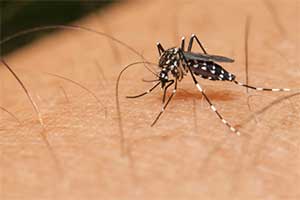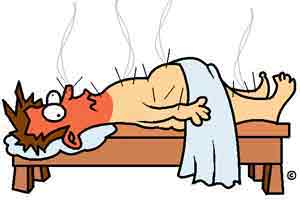Chikungunya virus infection in Italy
The European Centre for Disease Prevention and Control issued a risk assessment on the ongoing outbreak of chikungunya virus infection in Italy. Two related clusters of autochthonous transmission of chikungunya virus have been detected in Italy in the city of Anzio and in Rome, two areas located 60 km apart in the Lazio region.
 As the current outbreak in Italy is in the highly touristic greater metropolitan area of Rome and in the summer season when the mosquito is mostly active, there is a risk for international spread via returning infected travellers to countries with established populations of Aedes albopictus.
As the current outbreak in Italy is in the highly touristic greater metropolitan area of Rome and in the summer season when the mosquito is mostly active, there is a risk for international spread via returning infected travellers to countries with established populations of Aedes albopictus.
Chikungunya is an arbovirus transmitted mainly by the bite of infected Aedes mosquitoes, primarily Aedes aegypti and Aedes albopictus. The A. albopictus species is established in many parts of the EU, primarily around the Mediterranean and also in Malta. No imported or locally-acquired cases have been reported in Malta to date.
In 2007, chikungunya transmission was reported for the first time in Europe, when Italy experienced an outbreak affecting 217 cases in the Emilia Romagna region. Another localized outbreak of chikungunya is currently ongoing in Var department in South-eastern France since early August 2017.
The Health Authorities in Malta are in direct communication with the European Centre for Disease Prevention and Control and the Health Security of the Commission to follow the situation. Various initiatives are being undertaken by the Health Authorities in this respect to support preparedness, prevention and control of chikungunya virus infections. This includes:
- Communication measures on the disease
- Information to travellers
- Early detection of imported chikungunya virus cases
- Ongoing assessment of the risk of local transmission
- Measures to reduce vector breeding sites
Clinical presentation
Symptoms of Chikungunya include sudden onset of high fever (>38.5°C), headache, back pain, myalgia and severe arthralgia (mainly involving the extremities). Circa half of the cases develop a maculo-papular rash. Differential diagnosis with other conditions presenting with flu-like symptoms should be considered.
The majority (75-80%) of infections are symptomatic. Symptoms generally resolve after 7 to 10 days, although the joint pain and stiffness may last longer. Most cases recover fully, however the development of a chronic phase is possible, where the arthralgia can persist for several months. No specific treatment or licenced vaccines are currently available.
The incubation period ranges from 1 to 12 days with an average of 4 to 7 days. The viral load in humans is highest at the beginning of the infection and lasts 5–6 days after onset of fever.
Case definition:
A suspected case of Chikungunya is a person presenting with:
Acute onset of fever >38.5°C and severe/incapacitating arthralgia (not explained by other medical conditions)
AND
Who reports visiting an area with reported Chikungunya transmission (primarily the Lazio region in Italy: Provinces of Frosinone, Latina, Rieti, Roma and Viterbo) in the 15 days prior to symptom onset.
Recommended preventive measures
Although there are no travel restrictions, people who plan to travel to affected areas are advised to take personal protective measures against mosquito bites by:
- Wearing long sleeves, long trousers and hats.
- Using mosquito repellent that has DEET as an ingredient in concentrations between 40-50%. It is safe to use during pregnancy and while breastfeeding but only in concentrations less than 50%. This insecticide cannot be used on infants less than 3 months. Repellents need to be applied at regular intervals and in accordance with the product label.
- Sleeping or resting in screened or air-conditioned rooms otherwise use of insecticide-treated mosquito netting when sleeping is recommended.
- Individual protective measures to prevent mosquito bites should be applied all day long, especially during mid-morning and late afternoon to dusk, which are the periods of highest mosquito activity.
- Eliminating any possible mosquito breeding sites, such as standing collections of water while staying in an affected region.
In order to prevent local transmission of chikungyunya, infected persons should take the necessary precautions to avoid being exposed to further mosquito bites during the viraemic period.
You are reminded that you need to immediately report cases meeting the case definition to the Health Authorities on 79004731. This is a specific help line for doctors whilst the general public can call on 21324086.
You are also encouraged to advice travellers who plan to visit affected areas on prevention measures.
For further information please refer to the risk assessment issued by ECDC available at
https://ecdc.europa.eu/sites/portal/files/documents/14-Sep-2017-RRA-Chikungunya-Italy_0.pdf
We encourage your support and collaboration.
Yours truly,
Dr Charmaine Gauci
Superintendent of Public Health




